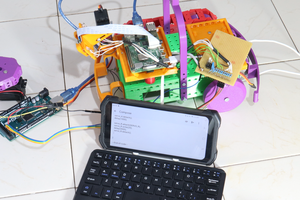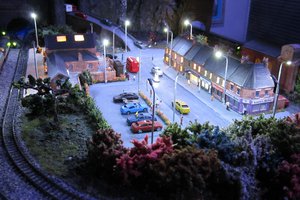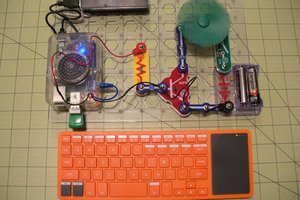For Pi Day 2016, I’ll demonstrate how to flash a Snap Circuits LED with the Kano Computer (my version of the Kano has the Raspberry Pi 2). I've lost count of how many computers I've built over the years, but I think it is safe to say that the Kano Computer was the easiest build ever. So simple a child could do it. Kano founders, Yonatan Raz-Fridman, Alex Klein, and Saul Klein, wanted to figure out what the next generation’s computer would be like, so they asked Micah, Saul’s seven-year-old son. Micah advised that he wanted to build the computer himself but it “had to be as simple and fun as Lego,” and “no one teaches me how to do it.” The Kano is “a computer and coding kit, designed for all ages, all over the world.” It will get “you programming in minutes, with simple blocks that create real code.” It’s designed to “to give young people – and the young at heart – a simple, fun way to make and play with technology, and take control of the world around them.” (Quoted statements are from the original kano.me website and original Kano Kickstarter page)
Why combine the Kano Computer with Snap circuits? The Kano Computer is recommended for ages 7 and older and Snap Circuits are recommended for ages 8 and older. So, a seven year old can learn to build and program the Kano Computer and when they reach age eight they can start learning how to connect the Kano to external electronic circuits and control these circuits with software they write on the Kano.
Why start learning programming and electronics at such young ages? Programming and electronics can help build critical thinking skills that give kids a leg up towards science literacy. We are starting to see an alarming decline of science literacy in the United States. The US continues to be the most scientifically and technologically advanced nation on earth and continues to lead the world in science and technology output. But as Niall Ferguson, the Laurence A. Tisch Professor of History at Harvard University, observes:
“It’s certainly true that U.S.-based scientists continue to walk off with plenty of Nobel Prizes each year. But Nobel winners are old men. The future belongs not to them but to today’s teenagers....Every three years the Organization of Economic Cooperation and Development’s Program for International Student Assessment tests the educational attainment of 15-year-olds around the world. The latest data on “mathematical literacy” reveal that the gap between the world leaders—the students of Shanghai and Singapore—and their American counterparts is now as big as the gap between U.S. kids and teenagers in Albania and Tunisia." Source
China is catching up to the United States according to the National Science Foundation. Nonetheless, though we have a number of serious issues we must confront such as global warming, we do have immediately pressing issues such as confronting anti-science movements like anti-vaccine, anti-GMO, and chemophobia (think Vani Hari a.k.a. “The Food Babe”).
Lack of science literacy causes fear of GMOs, yet the lives of 2.7 million children could be saved with Golden Rice.
Because of the lack of science literacy, people believe the Measles, Mumps, and Rubella (MMR) vaccine causes autism (it does not). Measles was wiped out in the United States by the year 2000, but “we had 644 cases in 27 states in 2014, the most in 20 years.”
With the impending public health threat of the Zika virus disease spread by the Aedes mosquito, it may be necessary to use the insecticide DDT. That’s right, DDT. It was banned in 1972 due to pressure from environmentalists based on bad science even though it is safe to use as an insecticide. Millions have died (mostly children in Africa) from Malaria. According to Marc Gwadz of the National Institutes of Health, “The ban on DDT may have killed 20 million children.” DDT is not carcinogenic nor toxic and can...
Read more » Steve Schuler
Steve Schuler
 Norbert Heinz
Norbert Heinz
 Boris Landoni
Boris Landoni
 Jack Flynn
Jack Flynn